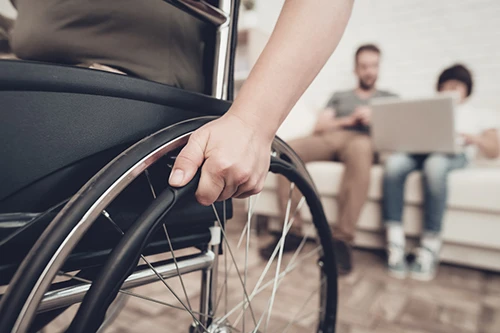Product liability cases often come about when consumers suffer harm due to defective products. Understanding the following defective product examples can help identify situations where a product liability lawsuit may be warranted. Working with a lawyer is also recommended if you believe you have a product liability claim. A legal professional is typically knowledgeable about multiple aspects of product liability negligence in order to help you with your case.
What Is an Example of a Defective Product Lawsuit?
Defective product lawsuits emerge when consumers are injured by products due to design flaws, manufacturing defects, or inadequate warnings. An infamous example includes the case against General Motors, where a faulty ignition switch caused multiple accidents, leading to severe injuries and deaths.
What Is an Example of a Product Defect?
Product defects are divided into three primary categories. These categories are typically categorized as design defects, manufacturing defects, and marketing defects. An example of a design defect can be found in the Ford Pinto case. The car’s fuel tank placement caused it to be prone to explosion in rear-end collisions, resulting in numerous injuries and deaths. This case is a strict liability example, where the product’s inherent design posed a significant risk to consumers.
What Are Examples of Cases That Can Result in Product Liability?
Product liability lawsuits can result from various defects. For example, design defects encompass products that are unsafe due to their design. On the other hand, manufacturing defects are errors that happen during the production process. Marketing defects are simply inadequate instructions or warnings that fail to inform users of potential safety risks.
What Is Considered a Defective Product?
A defective product is anything that fails to perform safely for its intended use due to design, manufacturing, or marketing flaws. For example, children’s toys with small detachable parts can be considered defective if they pose choking hazards and they are not adequately addressed by the manufacturer. Such issues often lead to product liability claims and lawsuits.
Following are additional examples of defective products and cause:
Missing Safeguards
Products lacking the necessary safety features can cause serious injuries. For example, power tools without proper guards can lead to accidents, resulting in liability for defective products. Such cases fall under strict product liability, where manufacturers must be held responsible for any injuries caused by inadequate safety measures.
Hidden Defects
Hidden defects are not immediately apparent and may only surface after prolonged use. These defects can lead to severe injuries or damage. Staying informed of the latest product recalls is recommended to become aware of these dangers before it’s too late.
Inadequate Safety Warnings
Failure to provide clear and adequate safety warnings can often result in major liability issues. Inadequate warnings can lead to product liability suits, as seen in the Designs for Health brand lawsuit, where insufficient warnings about potential health risks lead to consumer harm.
Toxic Chemicals in Products
Products containing harmful chemicals may lead to significant liability lawsuits. Examples include cases where asbestos in construction materials causes severe health issues, including cancer. These product liability cases often result in substantial settlements, which is why it’s important for companies to make sure that their products are free from toxic substances.
Product Malfunctions
Malfunctions in products can often cause injury and lead to lawsuits. For example, defective electronics that overheat and cause fires are a common source of product liability claims. Recent product liability cases involving faulty lithium-ion batteries in smartphones have led to significant settlements due to the risk of injury or property damage.
Closing Thoughts About Product Liability
Product liability law plays a key role in protecting consumers from defective products. Understanding liability examples and the types of lawsuits that may arise is important. Missing safeguards, hidden defects, inadequate safety warnings, toxic chemicals, and product malfunctions are some of the dangers that impact consumers. Understanding these liability examples and reaching out to an attorney is well worth your time if you find yourself considering a product liability suit.



